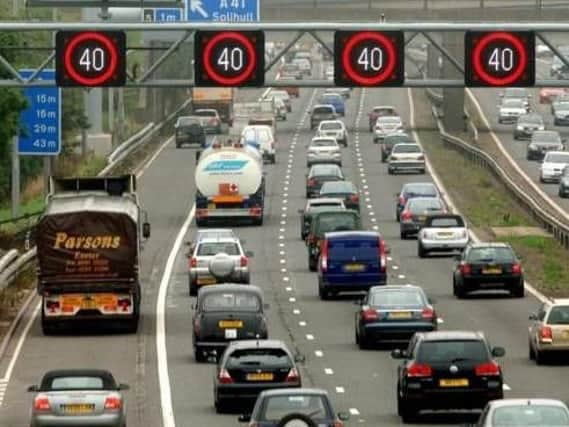What should you do if you break down on the smart motorway in Sheffield?


This is exactly the situation drivers on the M1 between J32 and 35A in Sheffield could face on the smart motorway.
The stretch of road was transformed into a smart motorway in March last year with extra technology in place to manage traffic.
Advertisement
Hide AdAdvertisement
Hide AdElectric signs are now in place which indicate when a lane is closed or to change the speed limits when needed.
However, the biggest change is the hard shoulder being, either temporarily or permanently, opened to traffic.
While this increases the capacity of the road, many drivers have raised concerns about scrapping the hard shoulder.
The hard shoulder has traditionally been known as the refuge for broken down vehicles so what happens if the worst should happen?
Advice from Highways England
Advertisement
Hide AdAdvertisement
Hide AdHighways England have reminded drivers that they should not drive in the hard shoulder unless directed; a solid white line will indicate where this is situated.
If there is no hard shoulder or its available to traffic then you should try and make your way to the nearest emergency refuge area (ERA).
The ERAs are spaced regularly along the motorway and should be used if you can safely reach it.
These are marked with blue signs featuring an orange SOS telephone symbol on them.
Advertisement
Hide AdAdvertisement
Hide AdIf you can leave your vehicle safely, contact Highways England via the roadside emergency telephone provided in all emergency refuge areas.
They will then either send a traffic officer to help you, or set the motorway signs to temporarily clear lane 1 to assist you to rejoin the motorway.
What should you do if you can't reach an ERA
Should this problem arise then, as long as you can still drive your vehicle, move it to the hard shoulder.
If the hard shoulder is not available then move it as close to the nearside verge or the other nearside boundary as possible.
Always switch on your hazard lights.
Stopping in nearside lane
Advertisement
Hide AdAdvertisement
Hide AdIf you stop in the nearside lane next to a hard shoulder or verge and feel you are able to exit safely with any passengers in the car, consider exiting your vehicle via the nearside (left hand) door.
Then wait behind the safety barrier, if there is one and if it is safe to do so.
If it's not possible to get out of the vehicle safely, or there is no other safe place to wait, then you should stay in your vehicle with your seat belt on and dial ‘999’.
The regional traffic control centre will soon become aware of the situation either from the police or roadside technology.
They can use the smart motorway technology to set overhead signs and close the lane to help keep traffic away from you. They will also send a traffic officer or the police to help you.